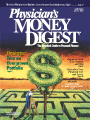Close-Up: Mortgages
Presented by McNeil Makers of
Tylenol
n.
Mortgage: A loan that closes the gap between the cash you have for a down payment and the purchase price of the home that you're buying.
The Complete Book of Money
Mortgages as we know them have only been around for the past 50 years or so. According to Stephen Pollan, author of (Harper Collins; 2000), following World War II, the federal government began offering veterans mortgages that could be slowly paid off over 30 years. The concept became so successful that commercial lenders began to offer the same types of loans. Prior to that, people either paid cash for a home or took out balloon mortgages that required a lump-sum payment on the entire principal at the end of the loan period.
Today, there are nearly 200 different types of mortgages to choose from. Selecting the right mortgage for you and your situation is the key to making home ownership a rewarding experience. Consideration of your present and future income, the assets you have, and the amount of debt you're carrying should all factor into deciding which mortgage is best for you. In addition, shop around to make certain you're getting the best deal that's available to you.
SOME BASIC MORTGAGES
Fixed-rate mortgage: This most common type of mortgage charges the same rate of interest for the entire term of the loan, usually 15 or 30 years. That keeps monthly payments the same, making it easier to budget. Payments made during the early years of the loan primarily reduce the interest, with more of the principal being reduced during the loan's later years.
Adjustable-rate mortgage: Also known as ARMs, the interest rate on this type of mortgage fluctuates according to the market level. If interest rates go up, so will your monthly payment, along with your budget. However, there are limits on how far the interest can move in a given year, as well as a lifetime cap on how far the rate can rise from its original number.
Hybrid loan: This type of loan, also known as an intermediate ARM, exists to offer borrowers the best of both worlds. A hybrid loan starts out like a fixed-rate loan, maintaining a constant interest rate for a set period of time, such as 7 or 10 years, after which it converts into an ARM. If you're looking for stable monthly payments and know you will move before the loan converts to an ARM, a hybrid might be right for you.
Balloon loan: This old-time loan is still around. Its popularity stems from its initial low monthly payments, which usually consist solely of interest, though it could include some principal. However, at the end of a set period, usually 10 years or less, the entire principal is due. If your income declines or interest rates rise during the loan's initial years to the point where you are unable to refinance, you could get stuck with a large payoff.
ADDITIONAL MORTGAGE TYPES
Two-step mortgage: Similar to a hybrid, this type of mortgage offers 1 interest rate for an initial period of time, usually 5 or 7 years, and then a higher rate for the balance of the mortgage. The difference here is that the second step could carry a fixed rather than an adjustable interest rate.
Graduated-payment mortgage: Also called a GPM, this mortgage is designed for young, first-time homeowners. It is built on the principle that most people's income increases over time. Consequently, the mortgage is designed so that monthly payments increase over time as well. They tend to be less popular today, mostly due to the amount of paperwork they require.
Shared-appreciation mortgage: This type of mortgage also offers young homebuyers the chance to get more house for their money. Lenders provide a mortgage at a below-market interest rate in exchange for a percentage of the appreciation when the home is sold. Shared-appreciation mortgages are more commonly used by nonprofit organizations to help people purchase their first home.
Convertible adjustable-rate mortgage: Unlike a conventional ARM, the convertible version provides an opportunity to convert to a fixed-rate mortgage at a predetermined point—usually between the 13th and 60th month of the loan. However, for this convenience, convertible ARMs carry a higher rate of interest than their conventional counterparts, and could include a conversion fee, usually no more than 1% of the remaining loan balance.
Obtaining a Mortgage
The Complete Book
of Money
According to Stephen Pollan's , mortgages are available from a wide range of sources today, including commercial banks, savings and loans, credit unions, and some government agencies. And thanks to the Internet, you can apply for them in person or online. Depending on your choice of source, you could be dealing with a mortgage broker or a mortgage banker. The latter represents the institution lending you the money; the former takes your application and uses their resources to seek out a lender for you.
The benefit of using a broker is their time and ability to investigate a wider range of mortgage options than the average person might have. Mortgage brokers also develop close relationships with lenders, and because lenders know that the borrowers the broker represents will be prequalified, special rates and services might be available to help compensate for the broker fee you pay.
CME Quiz
1) Different mortgage types, as they're know today, first became popular following:
- World War II
- Desert Storm
2) A mortgage that maintains the same interest rate for the length of the loan is a:
- Two-step mortgage
- Shared-appreciation mortgage
3) A graduated-payment mortgage is designed for:
- Recent medical school graduates
- Homeowners planning retirement
4) From which source are you unlikely to obtain a legitimate mortgage?
- Credit union
- Government agency
5) For a wide range of mortgage options, it's best to talk to:
- Joe the loan shark
- A mortgage broker
Answers: 1) b; 2) a; 3) c; 4) a; 5) d.
